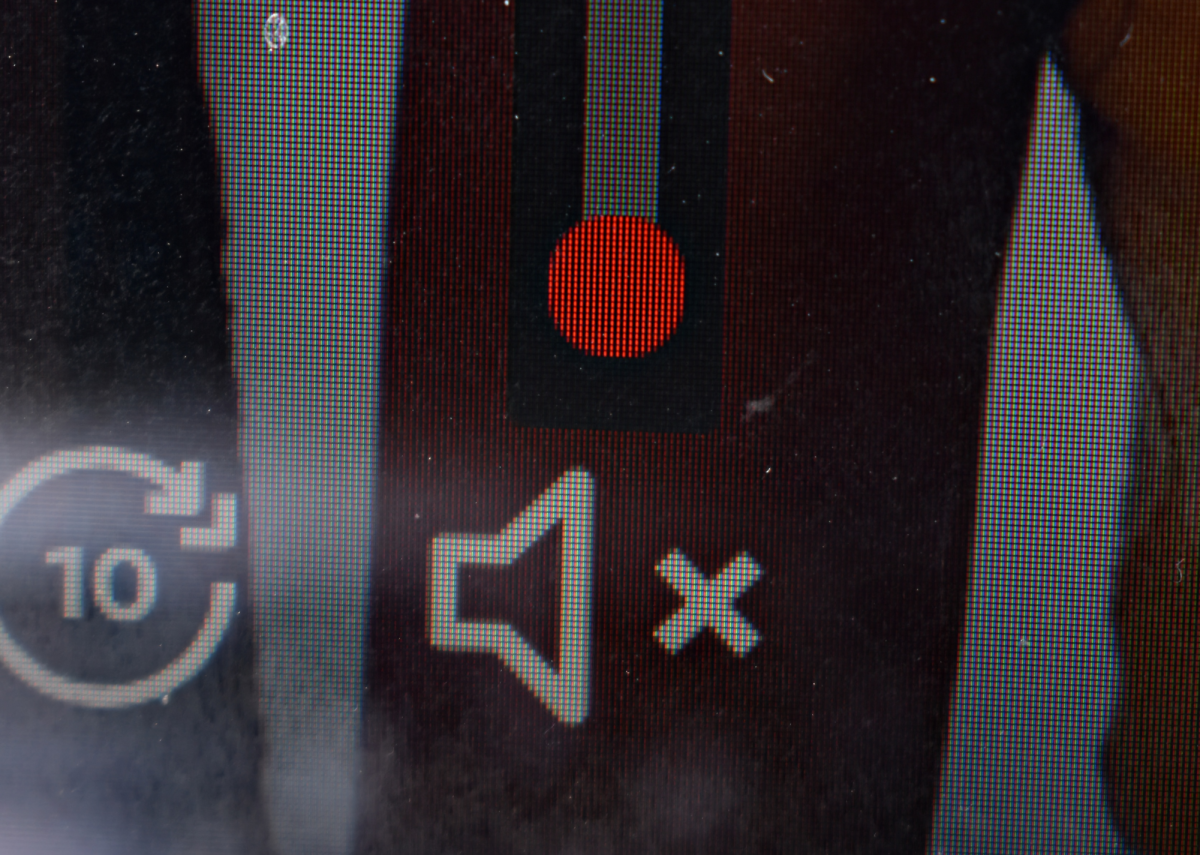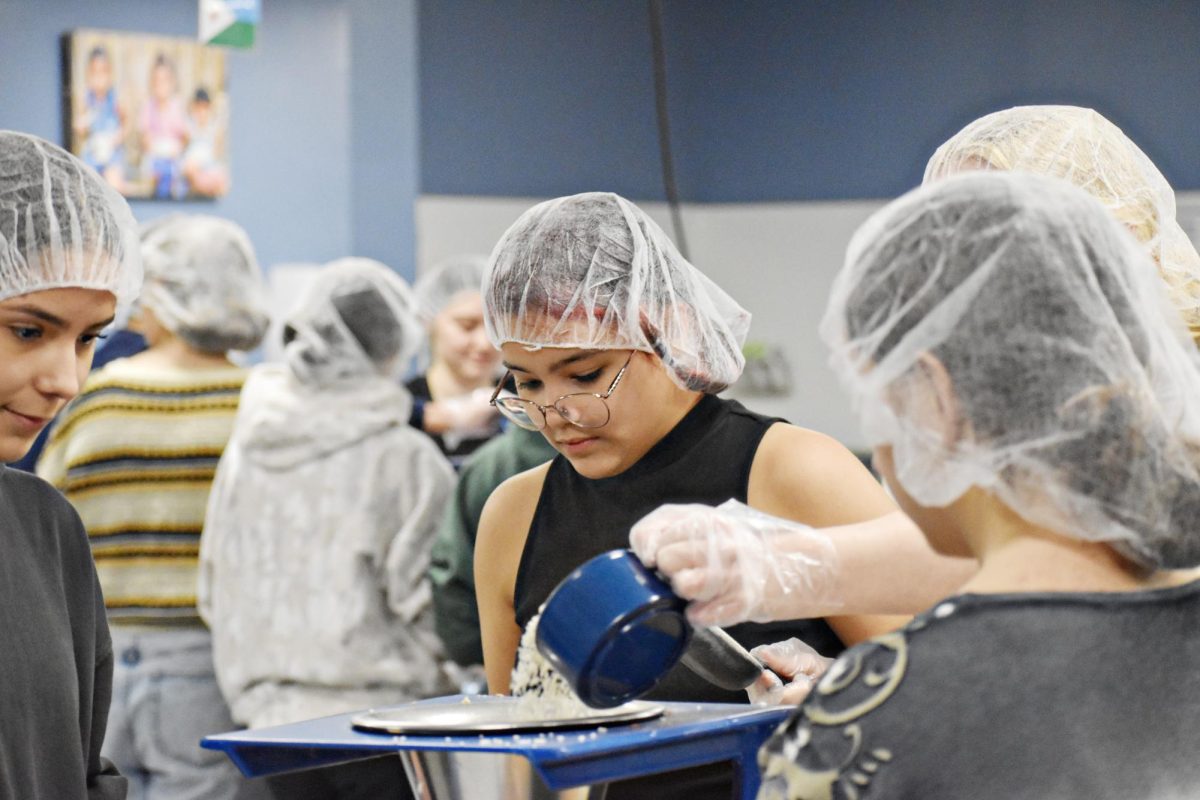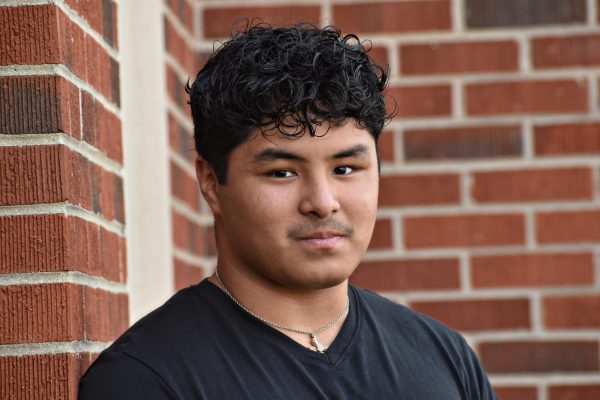The smell of starch hits the room and the flour scent expands. The heat of the room intensifies as the oven door swings open, revealing a batch of garlic bread. The golden crust crackles as it cools, the symphony of sound mixing with the homely aroma, each slice is a testament to the baker’s craft and lines the tables, promising a taste of home with every bite. And there beside the bread, the pasta takes the stage with the invitation to a comforting feast.
In this food class, held during second period, students were ready to start cooking up a classic dish: ground beef pasta with garlic bread.
The students had two days to make this dish which was no problem for them. Although pasta may seem like a very simple dish, there were a couple steps that the cooks had to go through to make the pasta exceptional. There were four different kitchen stations where there were small groups of students working to assemble the pasta dish.

The number one necessity before starting to cook is always to make sure one’s hands are clean and sanitized. Foods teacher Michelle Slezak requires her cooks to work in a clean environment; she even made sure that the tables were sanitized before and after the process.

Before firing up the stove, cooks had to make sure they had all ingredients ready to go for day one. Since class time is limited for cooking a full meal, chefs had to make sure they had everything nearby to speed up the process. Here, all the ingredients that will be used to cook the ground beef sauce and the fresh garlic bread are assembled. The mise en place, or set-up, consisted of butter, garlic salt, and an Italian baguette which would become a toasty garlic bread. The students also had a portion of ground beef that would be mixed with the cooked onions and tomato sauce
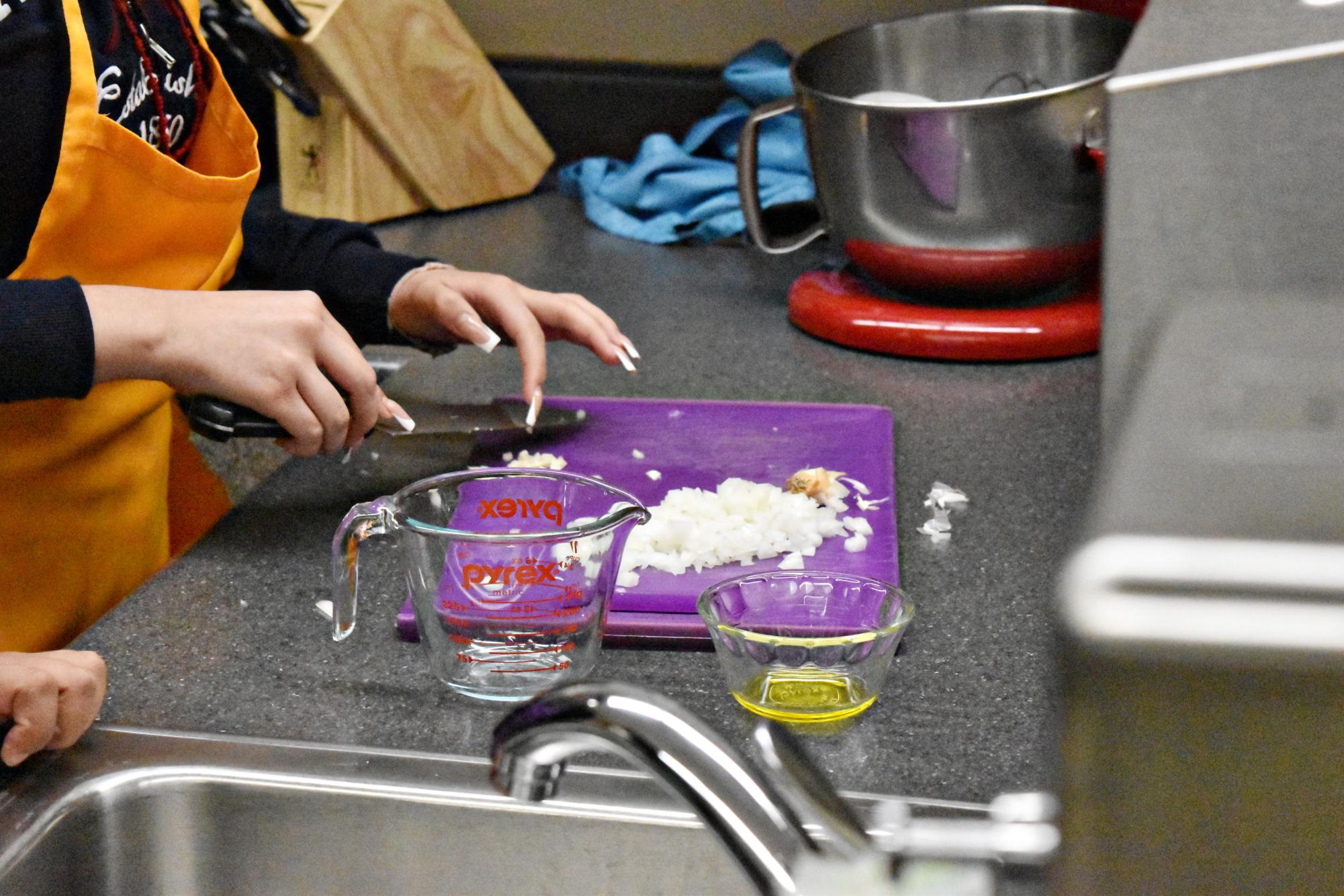
When the cooks were prepared and ready to start their meal, they followed step-by-step directions as instructed by Slezak. The first step involved a fresh onion and a generous amount of olive oil. When it was time to start cooking, the students all had different tasks to fulfill. Some had to prep their onions by dicing them into little cubes – tearing up a bit. On the other hand, some students had to get the stove fired up and season the ground beef.
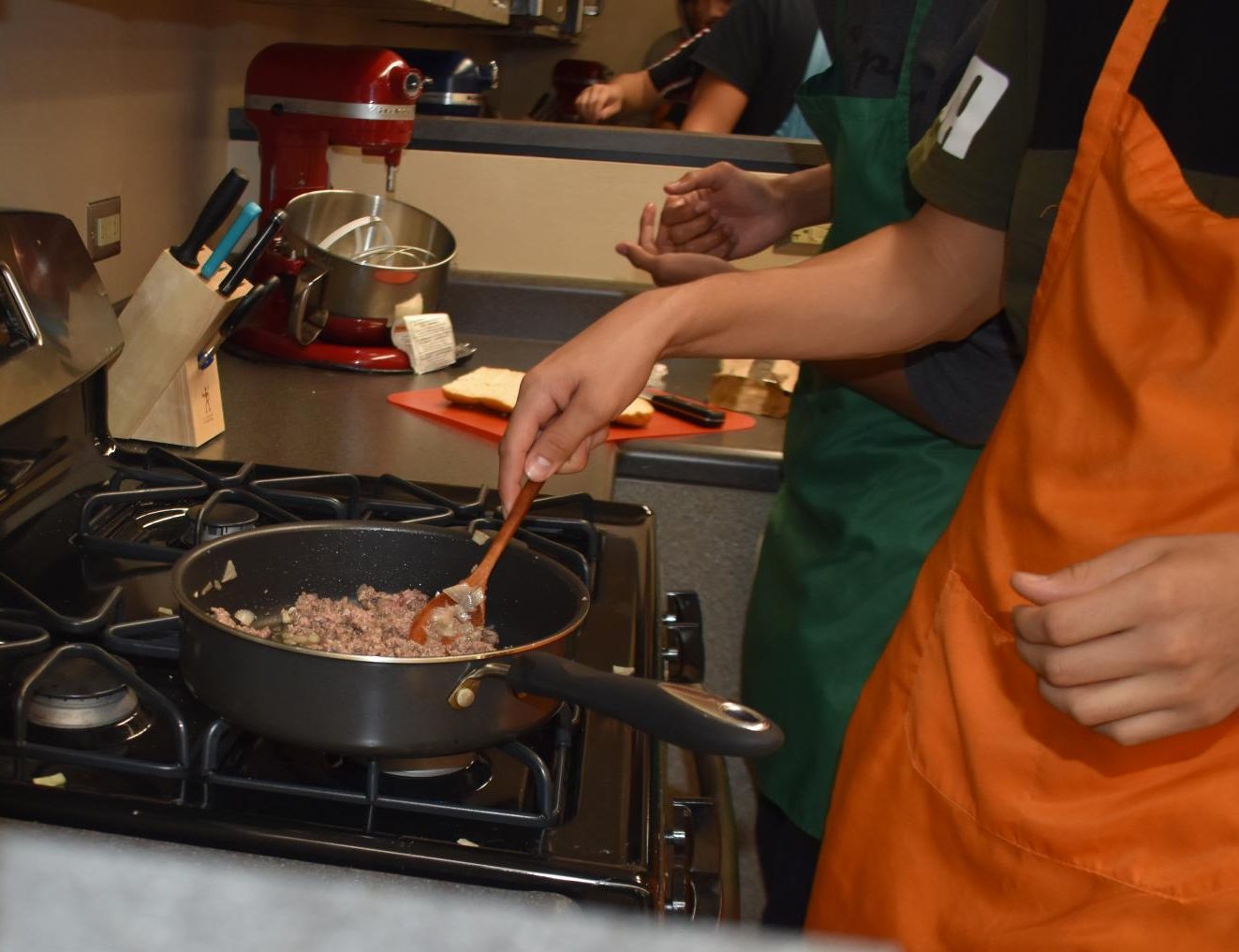
Shortly after the onions started getting that crispy brown consistency, it was time to add the ground beef. Students poured their ground beef carefully into the pan, trying to avoid any hot oil from jumping around. Then, one cook used a wooden spoon to stir and mix the onions with the meat. When the ground beef was well-cooked, all grease had to be drained. After that, it was time to wrap up and save the rest for day two.
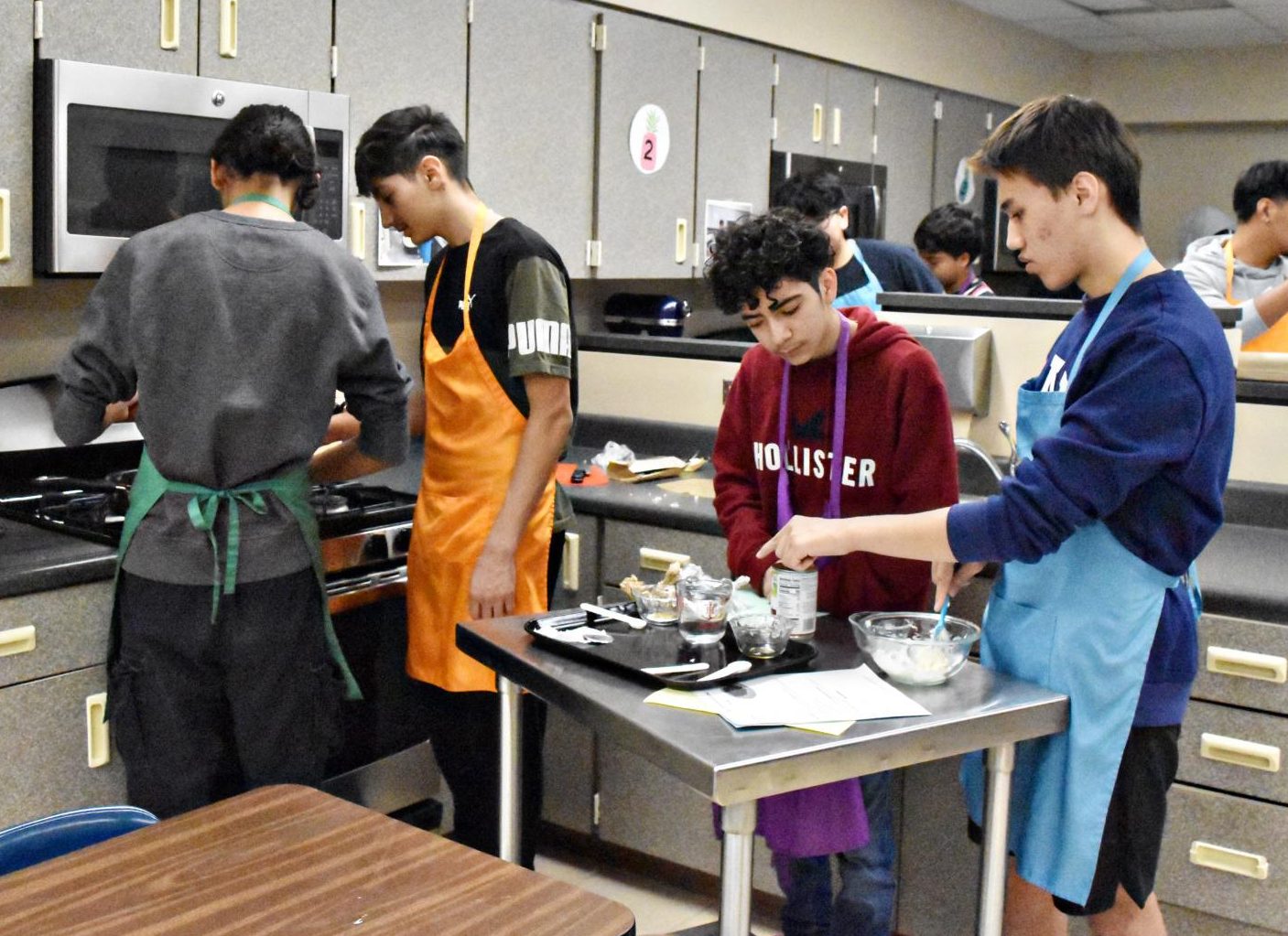
The next and final day, all cooks were a few steps closer to finishing their plate. Picking up where they left off, students added water to a high heat pan and let it boil for a few minutes. When big bubbles started to form inside the pan, the cooks added their noodles and let them cook for 12-14 minutes. The cooks also added their tomato sauce to their ground beef at a medium heat.
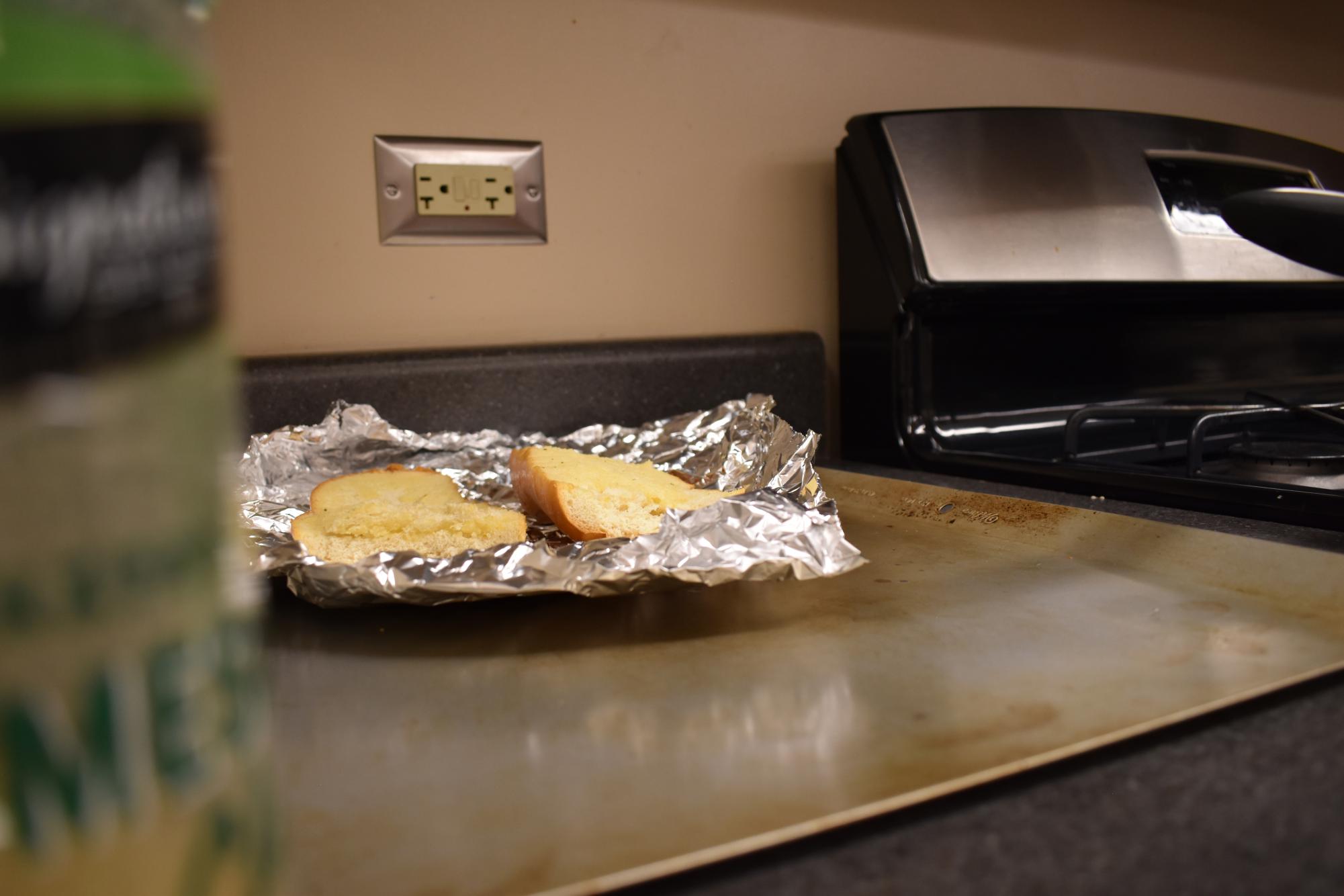
While the ground beef was re-heating and the noodles were getting ready, the garlic bread was placed in the oven, sitting at around 350 degrees for approximately ten minutes.
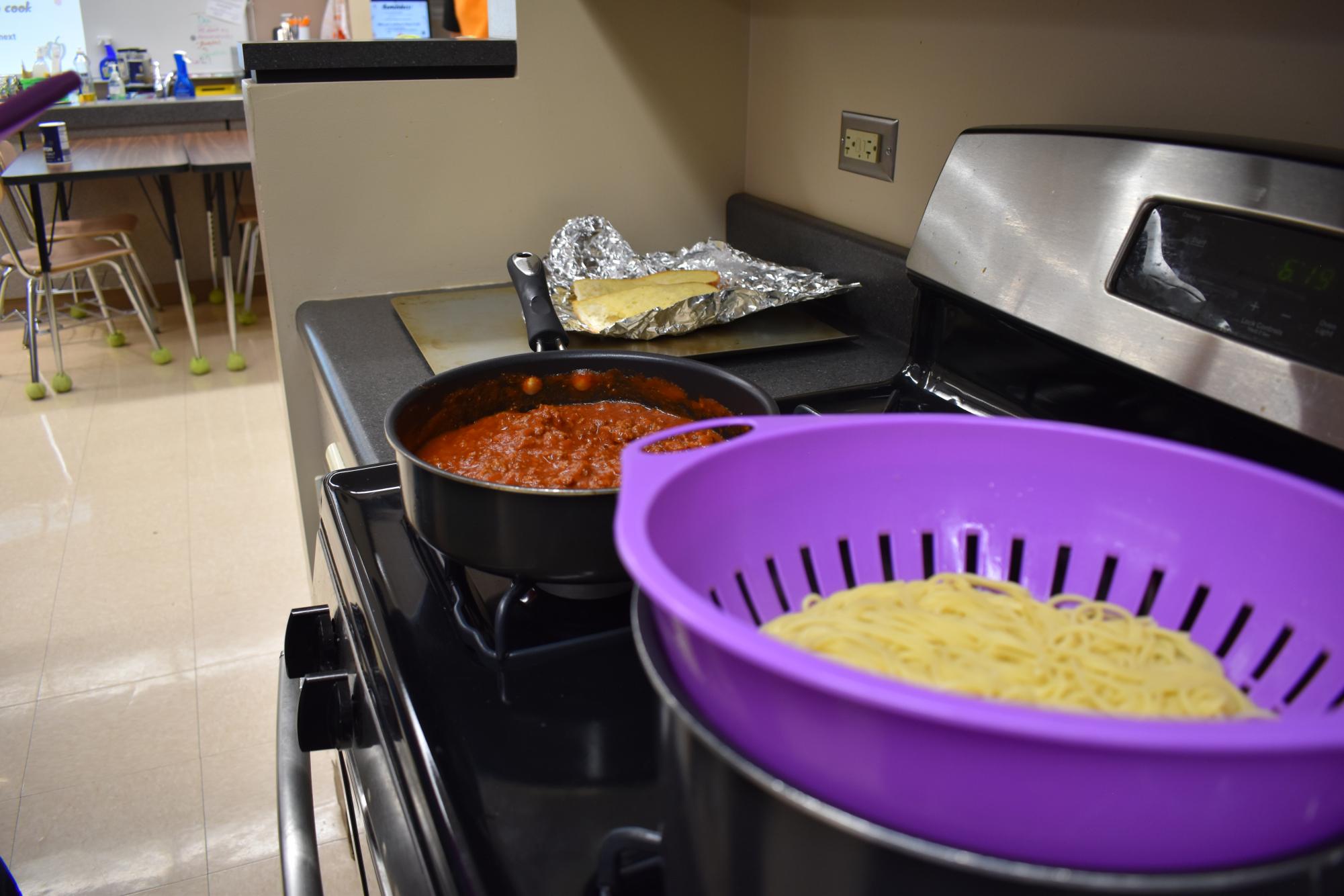
After the pasta water was drained and all other main ingredients were ready to go, it was time to serve. Each group checked in with Slezak beforehand to confirm that all tasks were completed, after which they could start filling up everyone’s plate.

While Slezak made sure every group had everything looking good, cooks were able to serve themselves and get a taste of their work. Soon, it was time for all groups to get ready to clean their station and have all areas sanitized and organized for the next class.
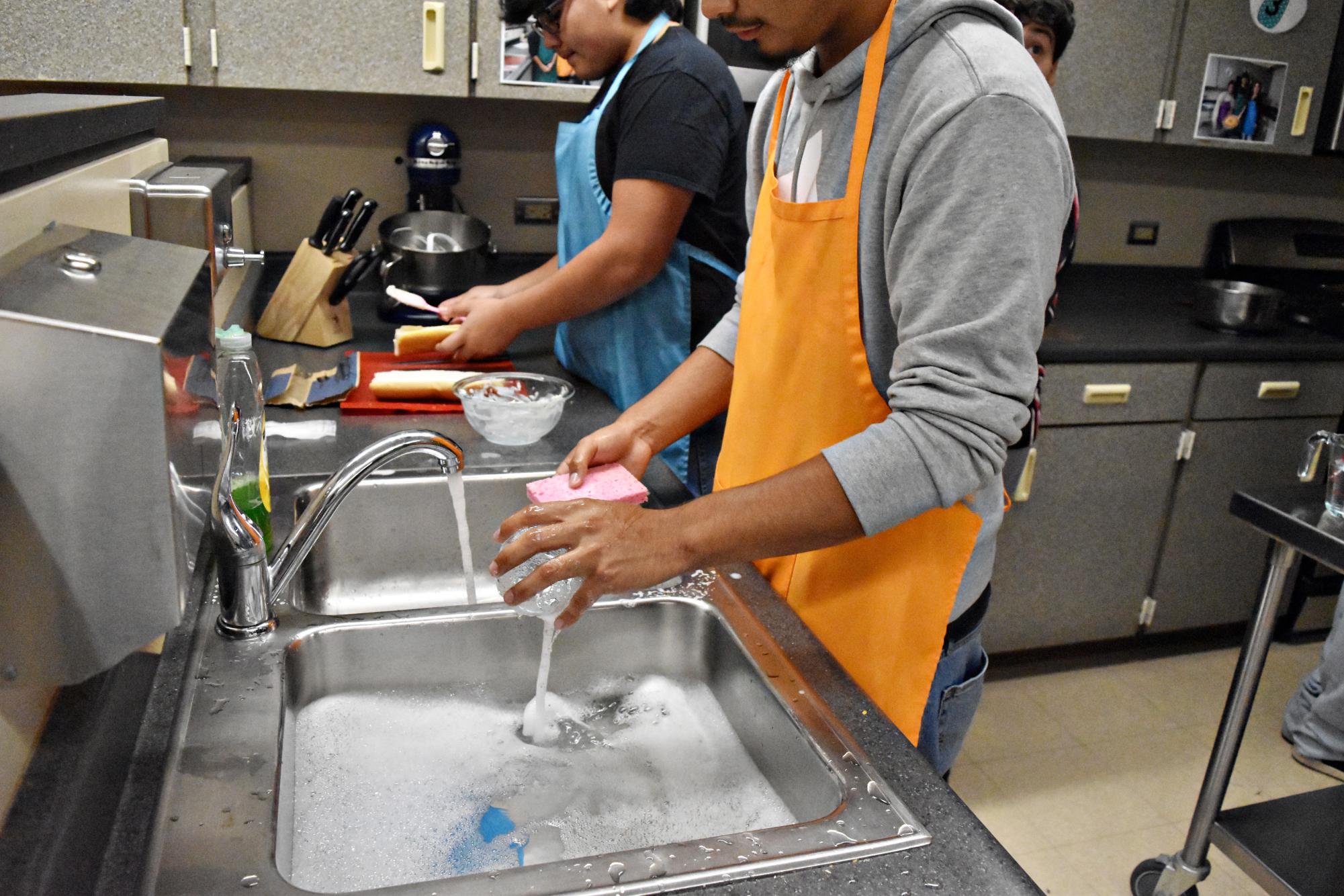
Once fed, it was time to wash all dishes, including all cutting boards, cups, pans, knives, spoons, etc.

Once the whole kitchen was cleared up, it was time to serve and rate the final product.




